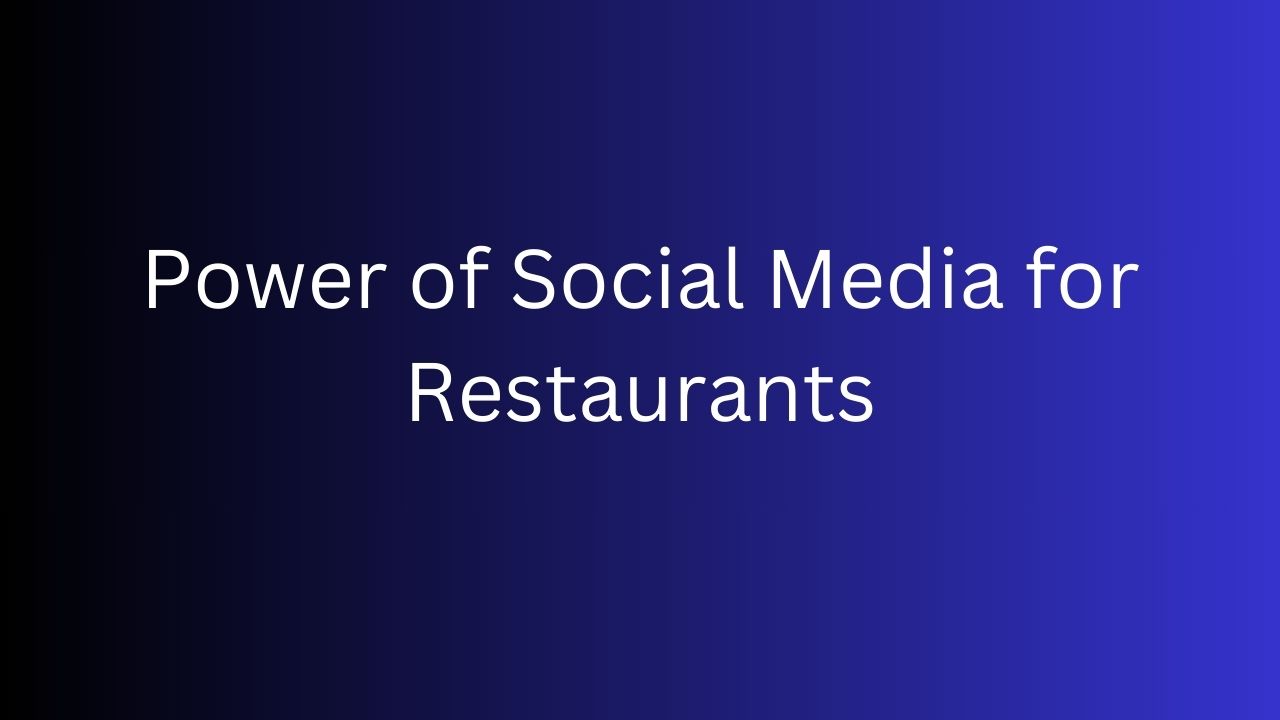This comprehensive guide delves into social media for restaurants, providing actionable tips and strategies to transform your online presence into a powerful engine for business growth.
Social media has become an indispensable tool for businesses of all sizes, and restaurants are no exception.
By effectively utilizing social media platforms, restaurants can connect with their target audience, enhance brand awareness, drive customer engagement, and ultimately boost their bottom line.
Understanding the Social Media for Restaurants
Social media has evolved into a multifaceted ecosystem, offering various platforms, each catering to specific audiences and engagement styles.

For restaurants, understanding the nuances of each platform is crucial for tailoring content and strategies to maximize impact.
1. Facebook
With its massive user base and diverse demographics, Facebook remains a cornerstone for a restaurant’s social media presence.
Utilize Facebook to share mouthwatering food photos, host interactive contests, and engage with customers through comments and messages.
2. Instagram
A visual powerhouse, Instagram is the perfect platform to showcase your culinary artistry. Share high-quality images and videos of dishes, highlight the ambiance, and capture behind-the-scenes glimpses into the kitchen.
3. Twitter
Twitter’s real-time nature and vast network of professionals make it ideal for sharing industry news, promoting specials, and conversing with fellow foodies and influencers.
4. Pinterest
Pinterest’s visual-centric interface makes it a treasure trove of inspiration for food lovers. Create enticing boards featuring delectable recipes, beautiful table settings, and creative cocktail recipes.
Learn more about Social Media Tips and Tricks.
Crafting a Compelling Social Media Strategy for Restaurants
Effective social media for restaurants extends beyond simply posting content. A well-defined strategy ensures that your online presence aligns with your business goals and drives tangible results.

1. Define Your Brand Voice
Establish a consistent brand voice that reflects your restaurant’s personality, whether casual, fun, sophisticated, elegant, family-friendly, or inviting.
2. Identify Your Target Audience
Understand your ideal customer’s demographics, interests, and online behavior to tailor content and engagement strategies accordingly.
3. Set Clear Goals
Determine your social media objectives, whether increasing brand awareness, driving foot traffic, or promoting special events.
4. Develop a Content Calendar
Plan your content ahead of time to ensure a consistent and engaging stream of posts.
5. Track and Analyze Performance
Regularly monitor social media analytics to measure your campaigns’ effectiveness and identify improvement areas.
Engaging Your Audience: The Heart of Social Media Success
Social media is a two-way street, and restaurants should actively engage with their audience to foster a sense of community and loyalty.
1. Respond Promptly
Address customer comments, messages, and reviews promptly, whether positive or negative. Demonstrating responsiveness builds trust and encourages ongoing engagement.
2. Encourage User-Generated Content
Run photo contests, host Q&A sessions, and invite customers to share their experiences using your branded hashtags. User-generated content adds authenticity and credibility.
3. Collaborate with Influencers
Partner with local food bloggers and social media influencers to reach a wider audience and amplify your brand’s reach.
4. Host Interactive Events
Organize online cooking demonstrations, virtual tasting sessions, and social media-exclusive promotions to generate excitement and engagement.
Showcasing Your Culinary Creations: A Feast for the Eyes
Social media is a visual feast; restaurants should utilize this to showcase their culinary masterpieces.
1. Capture High-Quality Images
Invest in professional photography or hone your skills to capture mouthwatering images highlighting your dishes’ presentation, ingredients, and ambiance.
2. Share Videos
Create engaging video content, from behind-the-scenes kitchen glimpses to mouthwatering recipe tutorials.
3. Tell a Story
Use social media to tell the story behind your dishes, highlighting the fresh, local ingredients and the passion of your chefs.
4. Embrace Authenticity
Showcase the personalities behind your restaurant, adding a touch of human connection to your social media presence.
Making Social Media a Business Driver
Social media should not be treated as a mere marketing tool; it is an opportunity to drive tangible business results.
1. Promote Specials and Events
Utilize social media to announce and promote special menus, limited-time offers, and upcoming events.
2. Drive Traffic to Your Website
Include links to your website in your social media profiles and encourage customers to visit for online ordering or reservations.
3. Monitor Customer Feedback
Use social media to gather customer feedback, identify areas for improvement, and demonstrate your commitment to customer satisfaction.
4. Track Social Media ROI
Measure your social media efforts’ return on investment (ROI), considering metrics such as increased website traffic, social media-driven sales, and brand awareness.
Social Media: A Continuous Journey
Social media is a dynamic landscape, and restaurants must adapt their strategies to stay relevant and thrive in the ever-evolving digital world. Here are some key considerations to ensure your social media presence remains effective and impactful:
1. Embrace Continuous Learning
Stay updated on social media trends, emerging platforms, and best practices. Attend industry workshops, subscribe to social media marketing newsletters, and follow thought leaders to gain insights and refine your strategies.
2. Adapt to Algorithmic Changes
Social media algorithms are constantly evolving, impacting how content is displayed to your audience. Understand the factors that influence visibility and adjust your content strategy accordingly.
3. Engage with Industry Communities
Actively participate in online forums, groups, and discussions related to the restaurant industry. Share your expertise, engage with fellow restaurateurs, and gather valuable insights.
4. Monitor Competitor Activity
Monitor your competitors’ social media presence to identify trends, popular content formats, and engagement strategies. Use these insights to inform your content strategy and differentiate your brand.
5. Measure Long-Term Impact
Social media success is more than immediate engagement metrics. Consider the long-term impact on brand perception, customer loyalty, and overall business growth.
Conclusion – Social Media for Restaurants
social media has become an integral part of the restaurant industry, providing a powerful platform to connect with customers, build brand awareness, and drive business growth.
By implementing the strategies outlined in this comprehensive guide, restaurants can effectively harness the power of social media to elevate their digital presence and achieve their marketing goals.
Remember, social media is a continuous journey requiring ongoing adaptation, strategic adjustments, and a commitment to staying relevant in the ever-changing digital landscape.
Embrace social media as a valuable tool for building and sustaining your restaurant’s brand, fostering a loyal customer base, and propelling your business to new heights of success.
